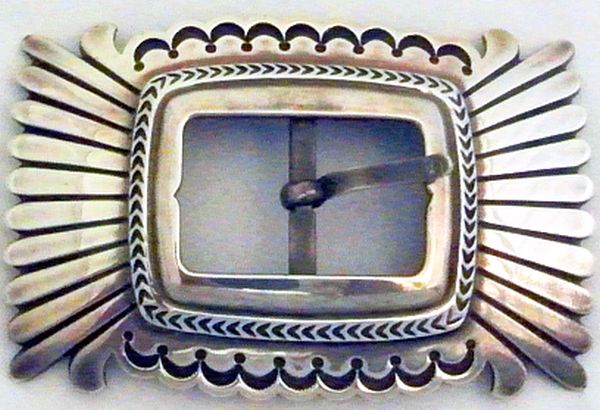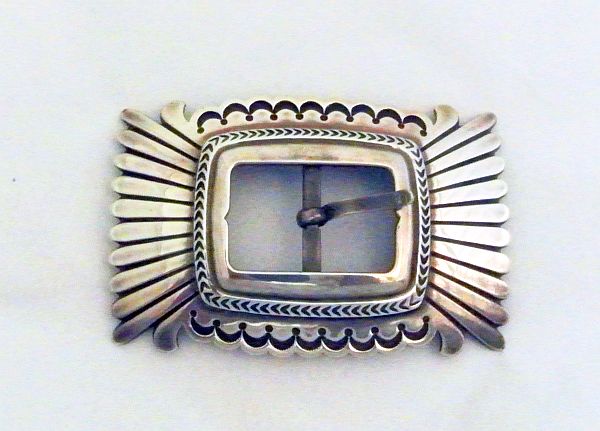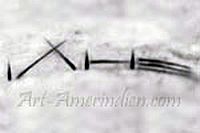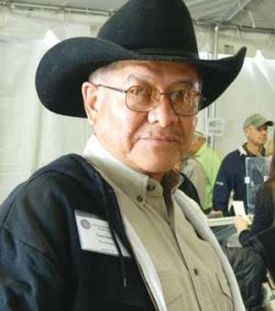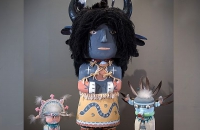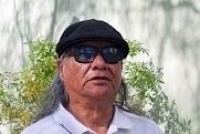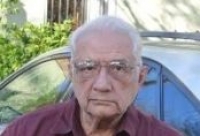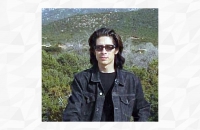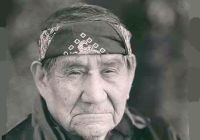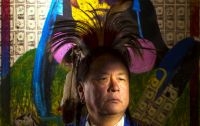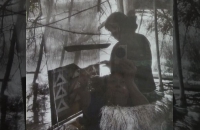Sterling silver buckle by Navajo silversmith Fidel Bahe.
This 2” x 3” heavy gauge silver buckle has a traditional hand stamped pattern.
Fidel Bahe was born on the Navajo Reservation in 1949. Fidel, self-taught, began producing silverwork at the age of 24. Prior to his making jewelry, he attended school at Northern Arizona University where he studied architecture design and engineering.
This Buckle is made to fit a 1” belt.
About the artist
Fidel Bahe
Fidel Bahe was born in 1949 at Keams Canyon, Arizona. He is the firstborn of eight children--two sisters and five brothers. He studied architecture and engineering at Northern Arizona University in Flagstaff before taking up silversmithing at the age of 24. Fidel focused on traditional Navajo designs with his own creative style. In 1976, Preston Monongye took Fidel as an apprentice and taught him the fundamentals and techniques to become a master jeweler. After ten months of apprenticeship, Fidel showed his jewelry at Santa Fe Indian Market, winning ribbons for all pieces he entered.
The art of jewelry-making was originally just a hobby for Fidel Bahe. After learning the basics of his craft, he apprenticed with Victor Beck and learned contemporary styling. Charles Loloma was also an inspiration and critic of his work, giving Fidel advice to help lead his art in a new direction.
While attending welding school Fidel met his close relative Wilson Jim who worked at Rocking Horse Ranch with Edison Sandy Smith. Jim and Smith taught Bahe the basics about traditional art and techniques including stamp work. During this time, Fidel was inspired to put traditional designs back into his pieces. Since then, Fidel has focused on quality, consistency, uniqueness, and cultural and artistic values. Of the inspiration behind his imaginative work, he says “it hits you right between the eyes.”
Over the years, Fidel Bahe entered many pieces at Santa Fe Indian Market, winning ribbons every year until 1991 when he won three first-place and two second-place ribbons before deciding not to return to the competition. Fidel feels his pieces are seen as finished and refined traditional work in the first and second phases of Navajo jewelry.
After an accident that injured his eye, Fidel learned the art of natural horsemanship and training foals. He now spends equal time between the arts of jewelry and horsemanship. For Fidel, his two passions come together as one, each embracing the six keys -- attitude, knowledge, tools, technique, time, and imagination.


